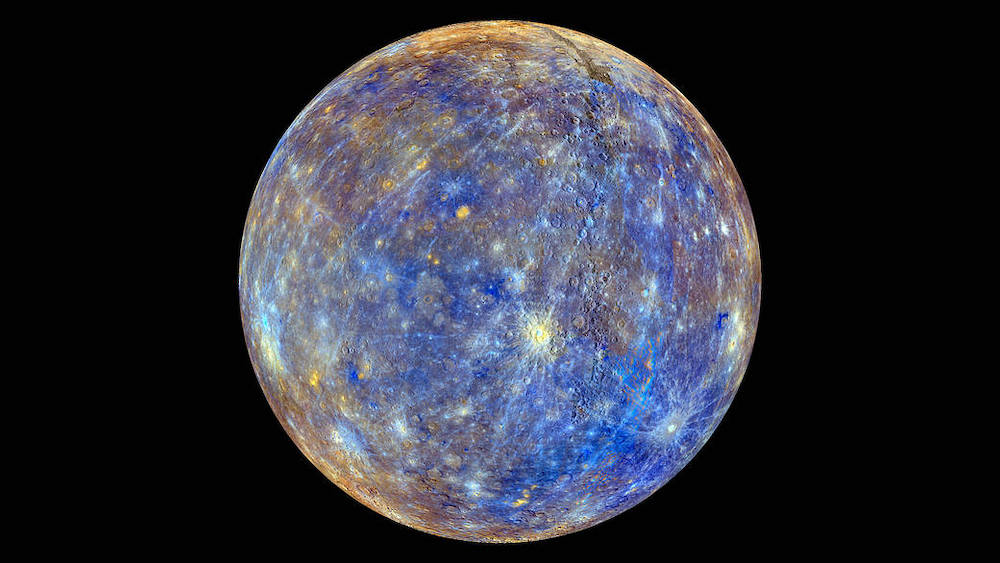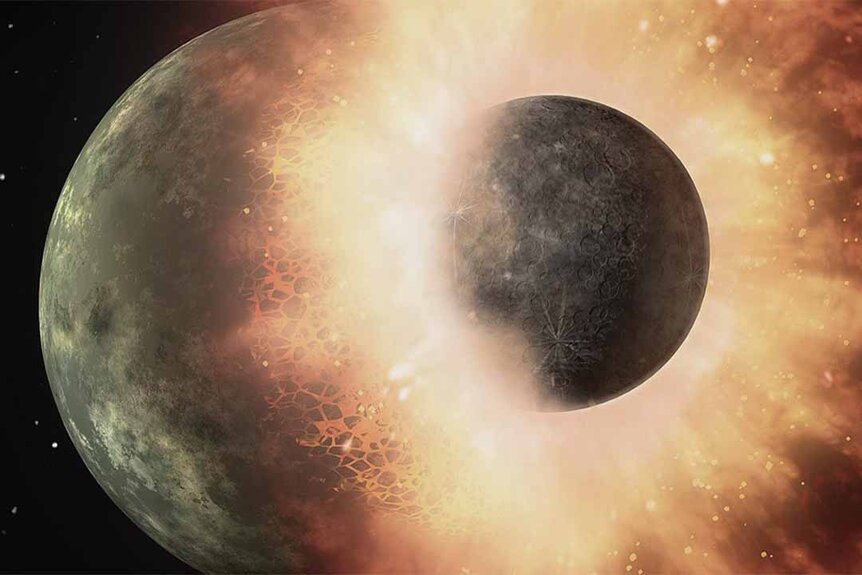Create a free profile to get unlimited access to exclusive videos, sweepstakes, and more!
Was Mercury as Large as the Earth in the Distant Past?
An ancient explosion might have shrunk Mercury down and left it a weird shadow of its former self.

The movie Seeking a Friend for the End of the World is a story about finding yourself when it really matters. It’s also about, as the title suggests, the end of the world. A massive asteroid is heading toward the planet and the mission to stop it has failed. Humanity has a few weeks to say its goodbyes before a space rock wipes the planet’s slate clean.
Often, when we talk about apocalyptic events, we talk in terms of the end of the world, but that isn’t accurate. We aren’t talking about the end of the world, but the end of us. In the vast majority of apocalyptic scenarios, the planet would persist more or less unscathed, even life would hold on and recover in time. It has happened at least five times before.
Planets can withstand all but the harshest of events, but in the early days of the solar system, worlds were literally colliding and all bets were off. Back then, Mercury might have experienced an apocalypse so severe that it was completely reshaped in the aftermath.
Mercury Is Weird Because It’s Half the Planet It Used to Be
All of the worlds in the solar system are unique in their own ways, but Mercury has some extra quirks. It’s the smallest planet in the solar system, smaller even than some moons. Ganymede and Titan, the largest moons of Jupiter and Saturn, respectively, are both larger than Mercury. It’s only about 41 million miles from the Sun, less than half of the distance the Earth enjoys. Without an atmosphere, surface temperatures on Mercury are extreme, as low as -290 Fahrenheit (-180 Celsius) on the night side and as high as 800 Fahrenheit (430 Celsius) on the day side. Things get even weirder when we look inside.
Every planet has a characteristic composition, but they all have roughly the same structure: a core, a mantle, and a crust. In most cases, the core makes up roughly a quarter to a third of the total mass, what’s known as the core mass fraction. The core of Mars makes up about a quarter of its total mass, the core of Earth is about a third of its total mass, and the core of Venus is right in the middle at roughly 29%. By comparison, Mercury’s core makes up over two thirds of its total mass, more than double the core mass fraction of the other terrestrial planets.
For More on Mercury:
How Solar Explosions Unleash X-Ray Auroras on Mercury
Could There Be Life Hiding in Salt Glaciers on Mercury?
Mercury's Diamond Covered Surface Makes it the Crown Jewel of the Solar System
By looking at the density of Mercury and by measuring its magnetic field, astronomers conclude that its core is at least partly made of iron and might be partly molten. Moreover, Mercury’s surface composition is weird, with components that shouldn’t have formed that close to the Sun. When taken together, all of these characteristics suggest a violent early history.
Mercury’s weirder qualities can be explained if it initially formed as a larger world much farther from the Sun. If it formed farther from the Sun, that would explain its weird surface composition. And if it was originally much more massive, that would explain its oversized iron core. The question is: what’s powerful enough to whittle away at a world? The answer: another world.
If proto-Mercury was struck by another planetary mass object (another proto-world setting up shop during the early solar system), that could have ripped away a chunk of its mantle and sent it spinning toward the inner system. The exact sequence of events isn’t yet clear, but it’s possible that a proto-Mercury had a glancing collision with proto-Earth, proto-Venus, or both, on its way toward its current home. The violence of those interactions might have slurped out much of its mantle like a cosmic liposuction operation, leaving the core and crust behind like skin stretched too tightly over bones.
The ongoing BepiColombo mission, a joint project from the ESA and JAXA, is currently on its way toward Mercury. It has already done a couple of gravity assist flybys of the tiny world and is planning orbital insertion around Mercury in December 2025. Once there, it will investigate Mercury’s formation, composition, and magnetosphere, up close. It’s certain to provide some answers and even more questions. We wouldn’t have it any other way.
Catch Seeking a Friend for the End of the World, available from Universal Pictures, and know that the apocalypse could always be worse.



























